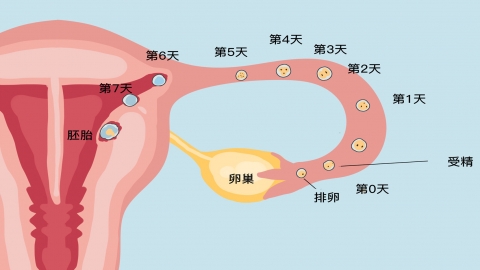What are the manifestations of female ovulation disorders?
Generally, women with ovulation disorders may experience symptoms such as menstrual irregularities, infertility, abnormal uterine bleeding, lack of biphasic changes in basal body temperature, hirsutism, obesity, and skin problems. If discomfort occurs, timely medical consultation is recommended. Detailed analysis is as follows:

1. Menstrual Irregularities
This is one of the more common symptoms of ovulation disorders. The menstrual cycle may become irregular, either longer or shorter than normal, or amenorrhea may occur. Menstrual flow may also change, becoming either heavier or lighter. These menstrual abnormalities are usually related to impaired ovulatory function.
2. Infertility
Failure to conceive after at least one year of regular sexual intercourse without contraception. Ovulation disorders can prevent the normal release of eggs or result in poor egg quality, making it difficult for fertilization to occur, thus affecting the chances of conception.
3. Abnormal Uterine Bleeding
Vaginal bleeding may occur outside the menstrual period. For example, light spotting or brownish discharge normally seen around ovulation may extend for 3–5 days and increase in volume, approaching the amount of a regular menstrual period. Alternatively, light vaginal bleeding may recur a few days after menstruation ends, with blood appearing bright red or dark red.
4. Lack of Biphasic Changes in Basal Body Temperature
When measuring and recording body temperature every morning upon waking without physical activity, the temperature of a healthy woman typically rises by 0.3–0.5°C after ovulation, forming a biphasic temperature curve. However, in women with ovulation disorders, the basal body temperature curve is often monophasic, showing little fluctuation throughout the menstrual cycle and remaining consistently low.
5. Hirsutism, Obesity, and Skin Problems
Ovulation disorders caused by conditions such as polycystic ovary syndrome (PCOS) may lead to hirsutism, such as fine, downy hair growth above the upper lip, and increased, thicker hair growth on the chin, chest, and abdomen. Additionally, some women may experience rapid weight gain, particularly with noticeable fat accumulation in the abdominal area. Skin problems may also occur, including recurrent acne on the face and torso, and skin that becomes rough and oily.
If one or more of the above symptoms appear, timely medical consultation is recommended to identify the underlying cause through hormone testing, ultrasound examinations, and other diagnostic methods, and to initiate early intervention and treatment. At the same time, women should maintain healthy lifestyle habits and a positive mindset in daily life to support reproductive health.









